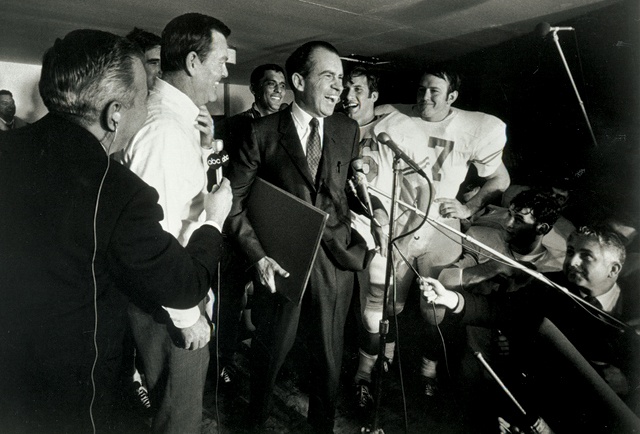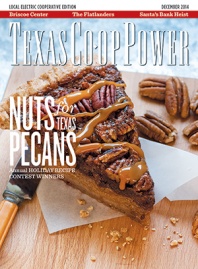In the early 1900s, John Heisman, an iconic coach whose name remains synonymous with college football, predicted that the sport was doomed to mediocrity, at least in the Southwest.
“You’ll never have great football played by the southwestern teams,” Heisman declared. “The climate won’t permit it.”
Ironic, isn’t it? After all, five players from the athletic conference alluded to by Heisman—the Southwest Conference— won the prestigious trophy named for him, presented annually to the nation’s best college football player.
Heisman, whose long coaching career ended in the late 1920s after a short stint at Rice University, probably should have known better than to ever say never. The Southwest Conference didn’t last forever, but its lengthy lifespan included some of the greatest teams and players that college athletics has ever seen in many sports—particularly in football.
The roots of the Texas-based Southwest Conference were established 100 years ago, finalized in a December 8, 1914, meeting at the Rice Hotel in Houston. The original schools that agreed to the constitution of what first was called the Southwest Intercollegiate Athletic Conference were the University of Texas, Texas A&M, Oklahoma, Baylor, Arkansas, Oklahoma A&M (now Oklahoma State), Southwestern in Georgetown and Rice, as a provisional entry.
Additions and subtractions to the membership came and went before the conference finally disbanded after the 1995-96 academic year. Despite the changing cast, the SWC dominated Texas for 82 years. The driving force was football, which held then and still holds a vice grip on the passions of the region’s sporting public. Southwest Conference teams also set standards of excellence in men’s—and later women’s —sports across the board.
It was, essentially, the only collegiate brand in the state, and discussions of its teams dominated talk at the water cooler from Dalhart to Brownsville, El Paso to Texarkana. People who never saw a game in person could still follow their favorite football teams via the play-by-play word pictures painted by the legendary Kern Tips and his fellow announcers on the statewide radio network.
“I still remember listening to Kern Tips,” says Jody Conradt, the former University of Texas women’s basketball coach who grew up in Goldthwaite and coached the Longhorns to the first undefeated NCAA women’s national championship team in 1985-86. “It was the only conference I knew. The Southwest Conference just seemed like what college sports was.”
The SWC dissolved for numerous reasons, not the least of which was an outbreak of rules violations in recruiting and other areas. At one point in the 1980s, all but two conference schools had athletic programs penalized for NCAA infractions. Ironically, playing by the rules and cleaning up college athletics a century ago were two reasons why then-new University of Texas athletic director Theo Bellmont led the charge for the creation of the league in the first place.
In addition, television marketers found it difficult to sell a national viewership on games dominated by Texas teams.
Even so, between its birth and demise, the Southwest Conference provided memories that will never fade.
The accolades were many. Southwest Conference teams won 64 national championships in 17 sports and five Heisman Trophies (Texas Christian University’s Davey O’Brien in 1938, Southern Methodist University’s Doak Walker in 1948, A&M’s John David Crow in 1957, Texas’ Earl Campbell in 1977 and the University of Houston’s Andre Ware in 1989).
But the SWC was a way of life that transcended the stadiums and arenas, from the smallest of towns to the biggest of cities in the southwest. It was ingrained in the sporting and cultural DNA of the state and its citizens.
“Basically, our world was the Southwest Conference,” says R.C. Slocum, who grew up in Orange and went on to serve as the head football coach at Texas A&M 1989-2002. Slocum likened the league to “an extension of Texas high school football,” the lifeblood of the college programs.
“It was intense because the high school football was intense,” he says. “This was just a continuation for those who had played at Brownwood, Breckenridge, Amarillo, Port Arthur, Orange, wherever.
“Yes, it was very competitive, but there were a lot of friendships,” Slocum adds. “So many kids [knew each other]. They’d just play each other one day a year, but then they’d all wind up at South Padre or somewhere during spring break.
“It’s totally different now.”
Slocum recalls many of the SWC coaches from his era grew up in Texas and played high school football. Grant Teaff, the architect of Baylor’s 1974 “Miracle on the Brazos”—the Bears’ first victory over UT in 17 years, leading to their first SWC championship since 1924—was raised in Snyder. David McWilliams was a star at Cleburne before earning All-America honors at Texas, playing on Coach Darrell Royal’s 1963 national championship team, and going on to be the head coach at both Texas Tech and UT.
“In college, you’d play against guys that you played with or against in high school,” McWilliams says. “Guys from other teams would come into Austin in the off-season, and we’d find a place for them to sleep in the dorm.
“You just knew everybody. It made for great rivalries, but friendly rivalries. ”
Indeed, the proximity of the schools helped contribute to the unique passions of the various fan bases.
That point was driven home to Teaff in 1972 when he arrived at Baylor, centrally located in Waco.
“On a Saturday morning, you’d see lines of cars heading south to Austin, southeast to College Station and north to SMU and TCU,” he says. “You don’t see that anymore.”
And Teaff, like many others, still misses it.
“I was so deeply immersed in it and loved it so much,” he says. “It was so overpowering in my psyche as someone who grew up around it.
“It was sort of everything to us.”
——————–
Randy Riggs, former sportswriter for the Austin American-Statesman, lives in Austin.


